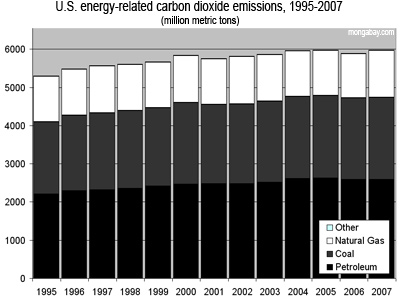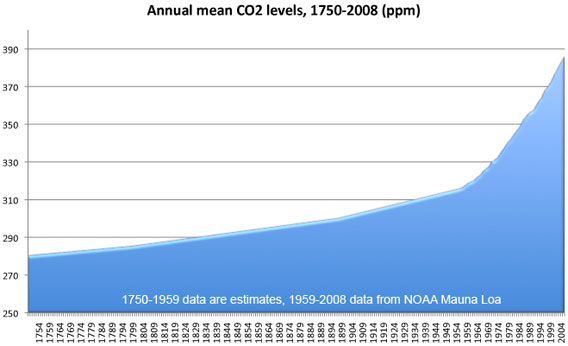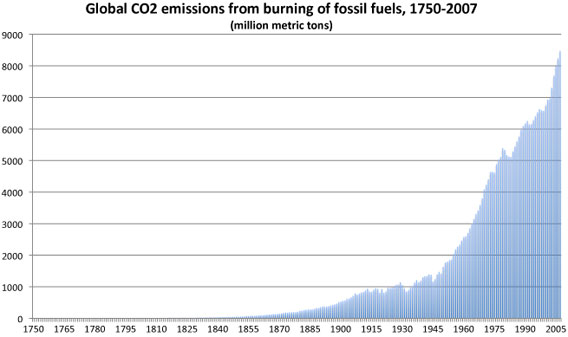The U.S. Environmental Protection Agency on Friday ruled that carbon dioxide and other greenhouse gases “may endanger public health or welfare”, a finding that opens to door to future regulation of such emissions under the the Clean Air Act.
The agency said its proposed endangerment finding “is based on rigorous, peer-reviewed scientific analysis of six gases – carbon dioxide, methane, nitrous oxide, hydrofluorocarbons, perfluorocarbons and sulfur hexafluoride – that have been the subject of intensive analysis by scientists around the world.”
“The science clearly shows that concentrations of these gases are at unprecedented levels as a result of human emissions, and these high levels are very likely the cause of the increase in average temperatures and other changes in our climate.”
 U.S. energy-related carbon dioxide emissions, 1995-2007 |
The EPA said scientifc analysis shows climate change poses a number of threats to human welfare, including higher concentrations of ground-level ozone; increased severity and intensity of storms; more frequent drought, heatwaves, and forest fires; rising sea levels; and harm to water resources, agriculture, wildlife and ecosystems. The finding noted that the poor face a disproportionate burden from the potential impacts of climate change.
The finding comes about two years after the U.S. Supreme Court ruled ruled 5-4 that carbon dioxide is a pollutant under the Clean Air Act and that the EPA has the right to regulate CO2 emissions.
The proposed finding now enters a 60-day public comment period before the EPA issues its final findings. Today’s proposed finding does not include any proposed regulations — regulation is more likely to come through the legislative process (Congress).
  Global CO2 emissions from fossil fuel use, 1750-2007 |
SUMMARY OF THE FINDING [PDF]: Today the Administrator is proposing to find that
greenhouse gases in the atmosphere endanger the public
health and welfare of current and future generations.
Concentrations of greenhouse gases are at unprecedented
levels compared to the recent and distant past. These high
atmospheric levels are the unambiguous result of human
emissions, and are very likely the cause of the observed
increase in average temperatures and other climatic
changes. The effects of climate change observed to date
and projected to occur in the future – including but not
limited to the increased likelihood of more frequent and
intense heat waves, more wildfires, degraded air quality,
more heavy downpours and flooding, increased drought,
greater sea level rise, more intense storms, harm to water
resources, harm to agriculture, and harm to wildlife and
ecosystems – are effects on public health and welfare
within the meaning of the Clean Air Act. In light of the
likelihood that greenhouse gases cause these effects, and
the magnitude of the effects that are occurring and are
very likely to occur in the future, the Administrator
proposes to find that atmospheric concentrations of
greenhouse gases endanger public health and welfare within
the meaning of Section 202(a) of the Clean Air Act. She
proposes to make this finding specifically with respect to
six greenhouse gases that together constitute the root of
the climate change problem: carbon dioxide, methane,
nitrous oxide, hydrofluorocarbons, perfluorocarbons, and
sulfur hexafluoride.
The Administrator is also proposing to find that the
combined emissions of carbon dioxide, methane, nitrous
oxide, and hydrofluorocarbons from new motor vehicles and
new motor vehicle engines are contributing to this mix of
greenhouse gases in the atmosphere. Thus, she proposes to
find that the emissions of these substances from new motor
vehicles and new motor vehicle engines are contributing to
air pollution which is endangering public health and
welfare under section 202(a) of the Clean Air Act.
PDF